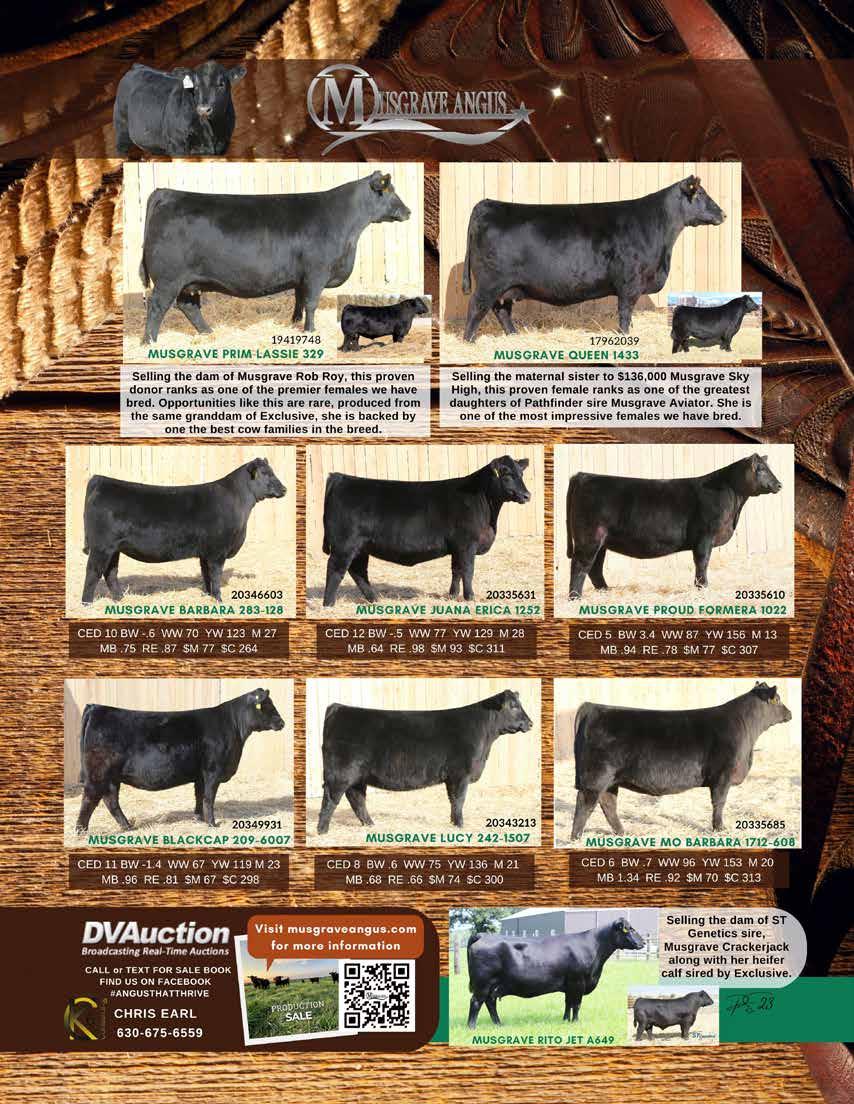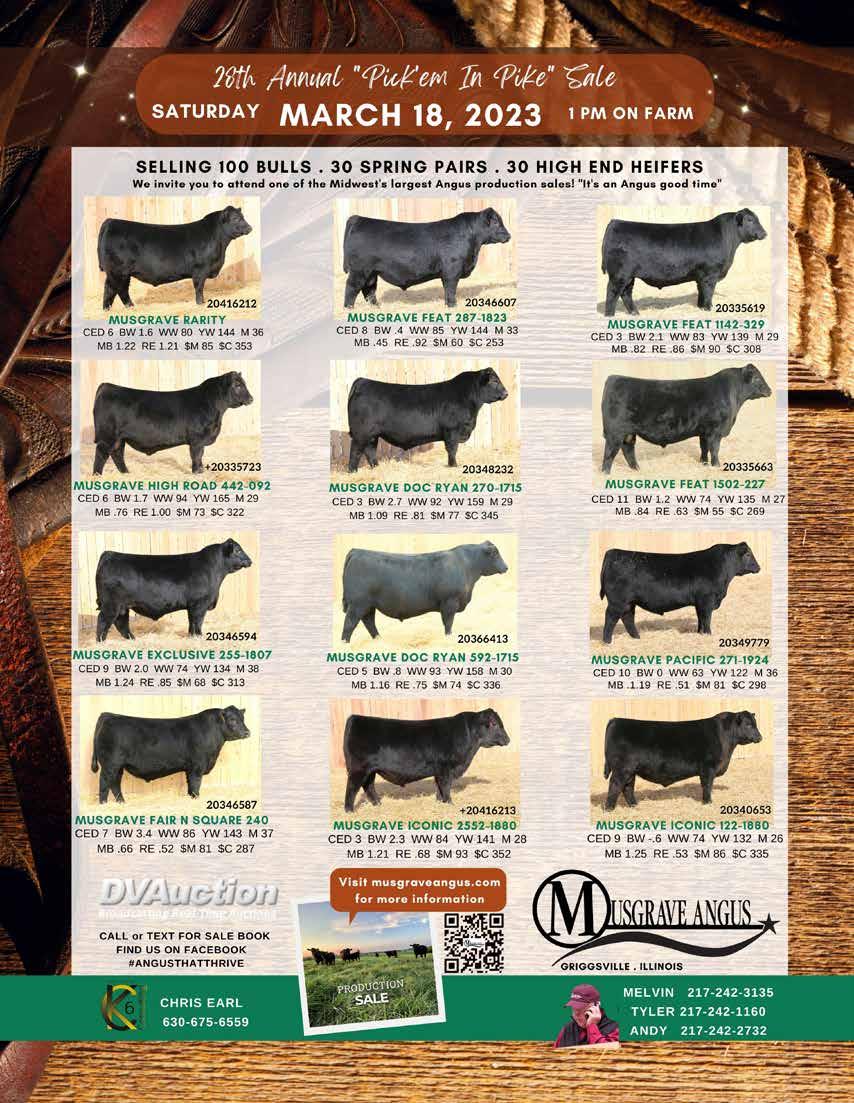




















































Thanks for joining us! We are a free, premier livestock publication featuring and serving seedstock and commercial beef producers nationwide. Raising cattle is so much more than a hobby; it is our livelihood and our passion. We understand that, and in every issue want you to see not only incredible cattle, but also relatable, entertaining, and informative editorial features for the producer with 5 or 500 head.
To us, you are more than reader or advertiser; you are a beef producer. We are committed to doing our best for you, every day. Please feel free to communicate with us, your input is appreciated.
641.425.2641
Bill and his wife, Nancy, have made their living in the cattle industry. He has provided marketing services for purebred and commercial breeders since 1970. Schermer Angus Cattle continues to be active in the NJAA and raises quality cattle near Clarion, IA. As owner of The Stockman, Bill leads by example providing producers with the highest level of customer service.

CHERYL KEPES, Assistant Editor

417.766.0990
cheryl@stockmanmag.com

Working for The Stockman is the perfect combination of two of Cheryl’s favorite things: writing and cattle. Cheryl has decades of experience as a professional writer. She finds great joy in sharing stories about people in the agricultural industry. Cheryl’s family raises registered Angus, Red Angus, and Simmental cattle in Fair Grove, MO.
Cheryl Kepes
Sarah Hill

Justin Fruechte
KIM BANKS, Graphics
507.530.0914

kkbanks@frontiernet.net
Makayla serves as editor, graphic designer, and manager of The Stockman. Her focus and passion continues to provide high quality service and original promotional materials to cattlemen. She and her husband, Jared, raise their four kids, and together they run their family operation, JMF Herefords and SimAngus, near Morris in west central MN.

SARAH HILL, Editorial Writer
307.274.0419
sarahhill1007@yahoo.com
Kim is a graphic designer with many years of design experience. Producing creative marketing materials to help others look their best is what she loves doing the most. She and her husband, Kevin, along with their son, raise grain and have a small commercial cow/calf and feeder operation on the family farm near Lynd, MN.
Sarah lives on a small hobby farm near Arlington, SD, with her husband, Braeton, and their three daughters: Harper, 8, Vayentha, 5, and Aurora, 1. She grew up on a Missouri dairy farm and has an Agricultural Journalism degree from the University of Missouri. Sarah enjoys baking, reading, and gardening.
Dr. Vince Collison
Kirk Lynch
TY BAYER
715.573.0153
tcreds@gmail.com
Ty works alongside his family in their purebred operations, Country Lane Farm and TC Reds near Ringle, WI. An advocate for youth programs and dedicated cow/calf man, he is excited to help producers merchandise their cattle.
MILES EDDY
507.841.1787
auctioneer2013@gmail.com
Miles grew up in southwest MN raising and showing cattle, and is currently residing in MO. When Miles isn’t working cattle he loves to use his auctioneer skills. He looks forward to working and meeting other producers and helping with all their advertising and marketing needs.
RON HINRICHSEN
785.770.0222
rlangus@bluevalley.net
For the past 30 years, Ron, his wife, Lynne, and their two children have owned and operated Hinrichsen Ranch, a registered Angus ranch in Westmoreland, KS. He has an extensive background in the agricultural industry and is excited to put it to work for each of his customers.
MARK SULLIVAN
816.304.0050
marksullivancattle@gmail.com
Mark Sullivan is a familiar face to many having worked for Sullivan Supply for many years. Mark brings many years of experience to The Stockman. Mark and his wife, Linda, and two children, Erin and Leo, live in Woodbine, Iowa, and have a small herd of Charolais cattle.
CORBIN COWLES
270.991.2534
corbin.cowles32@gmail.com
Corbin is an apprentice auctioneer and real estate professional for Schrader Real Estate and Auction company. He also helps run his family’s Angus and Simmental seedstock operation, Pleasant Hill Farms. Judging shows across the country and traveling are a couple hobbies of his as well!





JAN FORD
800.693.8048
jford.17879@aol.com
With her passion for agriculture, Jan brings over 35+ years of advertising sales experience in the beef industry. She and her late husband Norm had a commercial Angus cow herd and grain operation near Tipton, IA, which her sons still manage today.

LORA HUTCHINS

615.293.3695
loralea1172@gmail.com
Lora owns and operates Destiny Angus Farm with husband Brian and daughter Morgan in Charleston, IL. They have raised and shown cattle successfully on the national level for several years. They also have owned a production herd with as many as 200 registered cows.

BRANDON CREAMER
970.596.4965
creamer b 150@hotmail.com
Brandon owns Lazy JB Angus with his parents and sister in Montrose, CO. Raised in the cattle industry, he has a true passion for it and loves marketing quality cattle throughout the US.

ZAC HALL 701.595.6887
zac@fortelivestock.com
Zac is active in his family’s operation, Hall Stock Farm, near Berthold, ND raising registered Angus, Sim-Angus and commercial cattle. He loves working with livestock and youth and as a Livestock Judging Coach.

BRIGHAM STEWART / MEGAN COLLISON
785.747.8028
megancollisondvm@gmail.com
Brigham works alongside his parents at Mid Continent Farms, their large, multi-breed cow/calf operation in Kansas. Megan graduated from ISU as a DVM in the spring of 2021 and is a big part of her family’s Angus herd and Veterinary Clinic in Iowa.
Mead Farms raises four breeds of registered cattle, leading the nation in multiple aspects of performance.
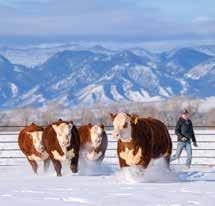

Kenny Angus strives for balance in breeding high-performance Angus cattle.

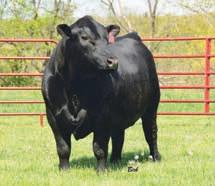

Brent and Sharlyn Sieck bring their dream of an innovative cattle heat detection and notification system to
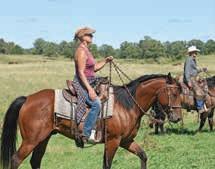
My husband and I feel like we have been burning at both ends of the candle lately. Between calving, chores, keeping track of the kids, bull sale prep and post-sale duties, working around the weather, bedding cattle, laundry, cleaning up the mud and straw that always makes it’s way into the house, a hundred more things in between, and don’t forget the million dollar question - what’s for supper tonight?! Now don’t get me wrong, I absolutely love our way of life. I bring this up not to complain, but to be transparent - and I know there are so many of you that are in the same boat, men and women alike. This is a challenging season to say the least! I have by no means mastered the art of finding the perfect balance to life, but it’s something I work towards every day. And maybe there is no such thing as perfect balance, because each day can be so different. Either way, just keep going and perseverance will see you through. This is all part of the crazy life that we love!
Our editorial writers, Cheryl and Sarah, have knocked it out of the park again with another set of fantastic stories. We hope you’ll enjoy reading about Mead Farms, Kenny Angus, and HeatSiecker. These folks are progressive and innovative, and they’re sure to inspire. Enjoy!
half page $450
third page $350
reference card $80

double card $300

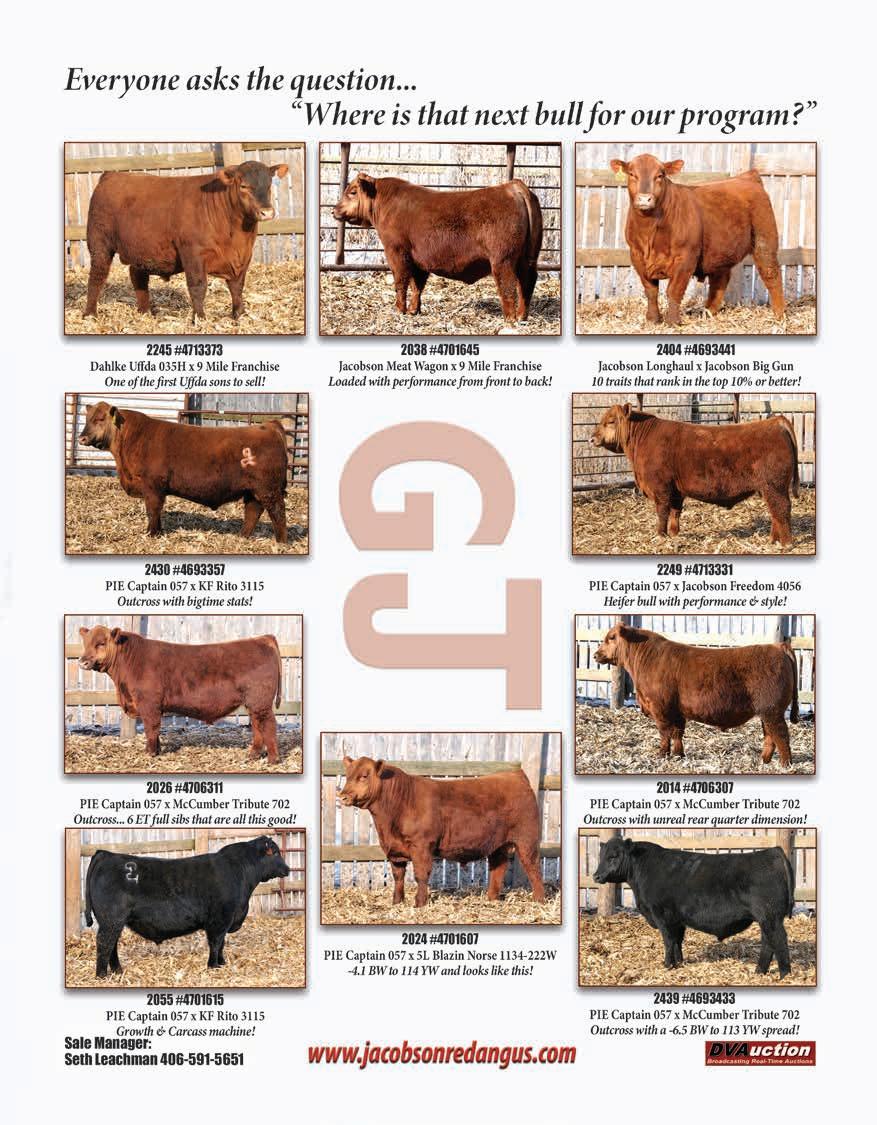


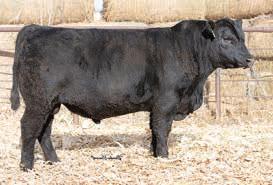







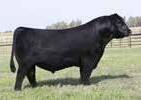





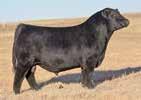





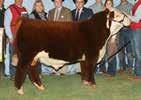



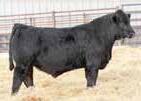






















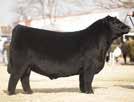
















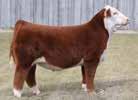
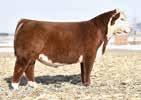

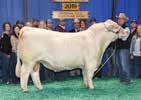






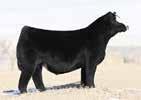





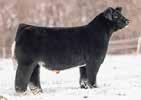








Mead Farms raises four breeds of registered cattle, leading the nation in multiple aspects of performance.
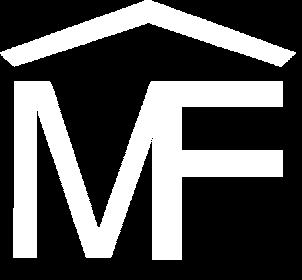
ocated in the heart of the “Show-Me” state, Mead Farms operates a beef cattle operation with a “show-me” philosophy. The cattle at Mead Farms must prove themselves in production and progeny to remain in the operation. Built on proof of performance, the diversified farm,
owned by Alan Mead and his two daughters, includes 2,500 head of cattle and 7,000 acres in Missouri.
Mead Farms manages four breeds: Angus, Hereford, Charolais, and Red Angus. The bar is set high for the registered seedstock at Mead Farms. Alan has spent decades fo -

cused on establishing herds stacked with outstanding performance, phenotype, and production. In fact, Mead Farms is the nation’s top Angus Pathfinder herd, and it routinely raises numerous Dams of Distinction in its Hereford and Charolais herds.
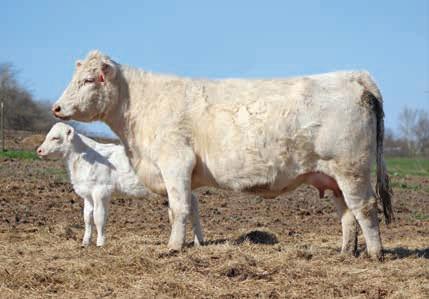

 courtesy Mead Farms
courtesy Mead Farms
The Mead family is in its 81st year in the cattle business. In 1942, Alan’s grandfather purchased the family’s first Angus cattle. The affinity for the Angus breed continued with Alan through his involvement in 4-H and FFA as an adolescent.


As an adult, Alan started his own Angus herd on rented property with about 15 head he had acquired through his 4-H and FFA projects. His objective when he first started remains the same goal to this day.
“I wanted to raise high-quality cattle, so I just tried to do things right and gradually grew it over time,” Alan Mead shared. “It didn’t happen overnight. It happened over 40-plus years.”
The love for the cattle indus-
above Pictured behind the bull are Alan Mead’s father and grandfather, Jim Mead and Johnnie Mead.try endures with Alan’s daughters; 20-year-old, Juliette, and 15-yearold, Annaliese. “Both are active in showing and also help out on the farm a lot too,” Alan added. “They enjoy it, and we have a good time.”
Juliette spent many years in FFA and received her American FFA Degree in 2021. Annaliese is currently an active FFA member.
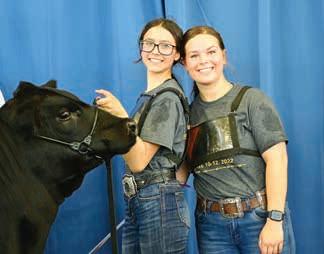
Though the roots of Mead Farms run deep in the Angus breed, the operation diversified its program to include three other breeds. Mead Farms launched its Charolais herd 20 years ago, Red Angus 15 years ago, and Hereford 10 years ago. Alan chose to expand the operation to better serve his customers. “Our
customers were wanting to still do business with us and some years they would use a black bull, another year a Hereford bull, or another year a Charolais,” Alan explained. “I have several customers who rotate different breeds, so it was a way to keep that customer.”
Managing four breeds can be complicated at times. Additional challenges arise while working to simultaneously market, register, and raise multiple breeds of cattle.



Despite the obstacles, Mead Farms navigates the more difficult path to best serve its customers. “We really appreciate our customers and when a customer has success that is what it is all about. The best news I can get is when a customer is profitable and does well with our cattle,” Alan shared.

Mead Farms operates its herd at three locations with managers overseeing production at each farm. “It’s a team effort and we all work together, and everyone has their own area of expertise and responsibilities,” Alan said. The fall calving Angus and Red Angus cattle reside at a farm in Milan, Mo. Mead Farms manages its fall calving Hereford and Charolais herds at a farm in Versailles, Mo. The operation develops all its bulls at the Versailles location as well. Additionally, Mead Farms keeps heifers, spring calving cows, donors, and recips at the farm headquarters in Barnett, Mo.
Angus cattle remain the cornerstone of Mead Farms; 70 percent of the operation consists of Angus cattle. Charolais, Red Angus, and Hereford makeup the rest of the herd with an even distribution across the three breeds. “We try to produce a product that will go out and work for our customers and we are customer driven,” Alan added.


Cattle at Mead Farms must thrive in their environment. The herds graze on fescue pastures and endure hot, humid weather in the summer and freezing temperatures in the winter. “We don’t supplement our cattle a lot. They have to be fertile, sound, and good-uddered and they have to do it on the environment and forage they have, or they don’t stay here,” Alan explained.
Through the years, a disciplined approach to culling has produced a herd full of cattle with real world performance. The thought at Mead
Farms is – if cattle are productive in the difficult environment in Missouri, then they will be successful most anywhere. “That’s why we do things the way we do here because our cattle typically go to a better environment,” Alan stated. “When cattle go to a better environment they usually excel.”
As much as Alan emphasizes proven production in the pastures, he places equal importance on genomic and phenotypic data. The expectation at Mead Farms is for cattle to possess outstanding pedigrees, EPDs, phenotype, and performance. “We try to have the entire package,” Alan said.
Mead Farms utilizes data to track performance. Herd managers collect birth weight, weaning weight, yearling weight, scrotal measurements, as well as fertility measurements, ultrasound, and genomic data on all calves. Mead Farms holds the honor of the nation’s No. 1 Angus Pathfinder herd, with 66 Pathfinder dams in 2022.

The American Angus Association (AAA) started the Pathfinder program in 1978 with the goal of identifying superior cows based on performance records.


According to the AAA, to qualify for the Pathfinder program, a female must produce her first calf near the herd’s average age for first calving. Additionally, to initially qualify, the female’s first three calves must post a minimum average progeny weaning weight ratio of 105. The Pathfinder program also requires a minimum of three calves from a cow to determine her consistency of calving and ability to produce superior calves for weaning weight year after year. All calves must be sired by a registered Angus bull. The requirements for the Pathfinder program align with the long-established goals of Mead Farms and many of its customers.
The females that make it to the donor pens carry a history of proven performance. The only females considered donor material are cows that have shown they will produce and raise high-quality calves. “We feel that before a cow deserves to be flushed, she has to prove herself and it doesn’t matter if it is a Hereford, Angus, Red Angus, or a Charolais –that cow has to prove herself worthy of being flushed,” Alan explained.
At Mead Farms the proof is in the progeny. Most donor cows will have raised at least two, many times three calves, before they are flushed. “After two we usually feel comfortable, because by the time she has had her third calf we have collected data on two of her animals clear through yearling,” Alan stated. Mead Farms raises around 70 embryo calves a year.
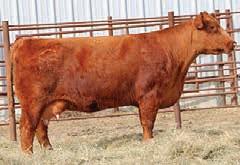
Bulls in the operation undergo just as rigorous scrutiny as the females. All of Mead Farms’ registered bulls receive genomic testing and undergo breeding soundness exams prior to sale. Alan hopes the combination of established pedigrees, EPDs, genomic data, and a first season breeding guarantee gives buyers assurance in Mead Farms’ genetics. “We are trying to provide more accuracy,” Alan said. “So, when customers come and buy these bulls, they can buy them with more confidence that they will go out and perform for them.”
Similar to the females in the operation, bulls must perform well in their environment to make it at Mead Farms. The bulls are handfed a high-roughage diet for development, but they are not pushed too hard or overfed. This equips the bulls to hold up against excessive shrinkage when they go to work in other herds.
Mead Farms’ decades of cultivating performance-based cattle has created depth and uniformity throughout its herds. The operation hosts three sales each year; a fall production sale held the fourth Saturday in October featuring bulls



and females, a bull sale held the first Saturday in March, and a spring production sale held the second Saturday in May offering bulls and females. “It seems like we are always either getting ready for a sale, having a sale, or delivering cattle after a sale,” Alan chuckled. “There is really never a down time.” Through its three annual sales Mead Farms sells 700 females and 700 bulls.
From its small beginnings, through years of growth, to its success today, Mead Farms remains steadfast in its goal of raising high-quality cattle. Alan attributes the operation’s success to the breed associations, veterinarians, businesses, employees, and customers who have all contributed to the accomplishments of Mead Farms. “I think that is what has helped us the most along the way is all of those relationships. We couldn’t do it without that for sure. I sure couldn’t have done it by myself,” Alan concluded. learn more meadangus.com
MEAD FARMS
PERFORMANCE TESTED BULL SALE: Saturday, March 4, 2023 at noon Mead Sale Headquarters in Versailles, Mo.
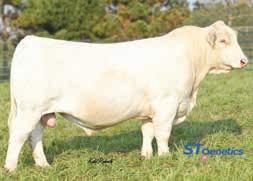


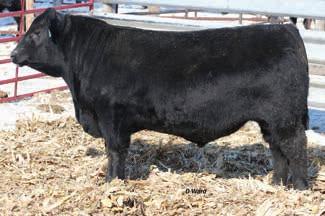






Depend on BRUTE® for economical, long-lasting control of biting and sucking lice.
Some pour-on insecticides for cattle depend on insect growth regulators (IGRs) to obtain acceptable lice control. But with the long-lasting killing power of BRUTE® Pouron for Cattle, there’s no need for an IGR.

Just one application of rain-resistant BRUTE® controls biting and sucking lice for up to eight full weeks. Since lice have a life cycle of just 22 days, that’s long enough to control existing adults as well as emerging nymphs.
What’s more, BRUTE® is labeled for use on lactating and non-lactating beef and dairy cattle, with no pre-slaughter withdrawal requirements or milk withholding restrictions.
To learn how BRUTE® can give you all the lice control you’ll ever need for just 48 cents a head, see your livestock products supplier or visit www.y-tex.com today.




 BIGK/WSC IRON HORSE 025F
FF RITO ROYAL 7EX10
BIGK/WSC IRON HORSE 025F
FF RITO ROYAL 7EX10


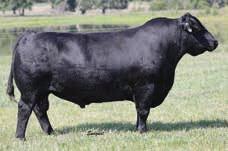



University research you can use.
Hannah Smith, Nebraska Extension Beef Systems Extension Educator University of NE - Lincoln, UNL Beef beef.unl.edu

Expected progeny differences (EPDs) are a widely utilized tool in making genetic decisions centered around breeding objectives. With the progression of DNA technology, the industry has been able to incorporate genomics into the numbers that are used to calculate EPDs. Prior to inclusion of genomic information, we relied on pedigree-based relationships that operate on the averages. This assumes a 50% contribution from the dam and 50% contribution from the sire to the breeding value of the offspring. However, an animal’s actual genetic merit or it’s EPD value for a given trait can be greater or less than that of its parents, depending upon how the numerous random combinations of genetic material contributed by the sire and dam come together and are expressed in the offspring.
The lacking component of historical genetic assumptions is accuracy. As a bull sires more offspring and those records were reported the EPDs would change to reflect offspring performance and accuracy would increase. By including genomic information in EPD calculations, it increases the accuracy of younger sires. For EPDs with large

amounts of records such as birthweight, genomics can be the equivalent of already having 25 offspring records submitted on that animal prior to ever breeding a cow.
Sampling methods to collect tissues for identifying the genetic makeup of the animal can include blood samples, hair samples, or tissue samples such as ear punches. Through the collection of DNA samples from a calf and its parents, we can make better estimations as to how an animal will relate to each parent, or even grandparent, on a genotype level. This understanding gives more accuracy to knowing a young animals EPDs which gives greater precision to predict the impact on performance of future offspring.
Table 1 is a comparison of full sibling bull (twin) calves that represent genetics out of the same sire and dam that have been DNA tested and that information utilized in the calculation of their EPDs.
In this comparison, we can see these bulls are similar in CED, WW, YW, and Milk for some examples. In contrast, we can see where these bulls differ in SC, MW, and Doc. The differences and similarities are echoed through the comparisons of the bulls’ $Values. Calf #1 displays

opportunities to be the better selection when looking to retain females ($M). On the other hand, if retaining ownership of calves through the finishing period and marketing as a live animal, Calf #2 would produce offspring with higher profit potential.
Genomic-enhanced EPDs are the best estimate of an animal’s genetic value as a parent, combining all available sources of information. This permits higher accuracies for EPDs on younger animals. With the inclusion of genomics, we can better understand how an offspring relates to its parents from trait to trait, which creates an opening for increased certainty that mating selections will progress towards breeding objectives more rapidly and as intended.

Courtesy University of NE - Lincoln, UNL Beef Interviews with the authors of BeefWatch newsletter articles become available throughout the month of publication and are accessible at: www.go.unl.edu/podcast.





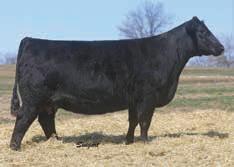



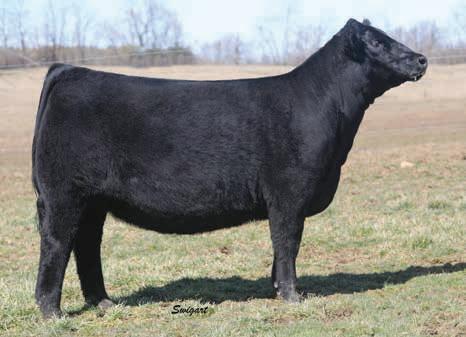

 by John McDonald
by John McDonald
• Pull on highway at speed limit.
• Fits through any gate your pickup will.




• Stable on uneven terrain.
• Permanent sheeted adjustable alley.
• Transport wheels are permanent, no sliding off the axles and rolling out of the way.
• Wheels on each panel and electric over hydraulic jack eliminates lifting— saves time.

• Frame gates for sorting.
3 Sizes Available!
These calves have seen it all in 2022, starting with a big spring flood. Selected on soundness and phenotype, they are developed the “Wilde Way” out in big pastures and they have to travel. Northern Minnesota is beautiful in early March, we invite you to join us March 4th!





BD: 8-17-21
KOESTER INSIGHT 192 (#4604655)


HERDSIRE PROSPECT! You won’t sacrifice growth and carcass with your first-calf heifers with this guy. He’s a female maker with high performance and is a true HerdBuilder from a long lineage of ranch-favorite females.
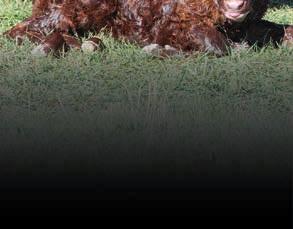
Our fall-calving program is by design. Our cattle are bred, born and raised to excel in conditions opposite of most production seasons. They are tough, resilient and prolific. Sure, calving in August might be easier than March, however maternal and actual performance in the winter are antagonistic to nature and we identify and eliminate those unworthy of staying in our herd.
Conformation, muscle, foot structure, disposition, performance and maternal strengths are backed by breed-leading EPDs for growth and carcass. At the end of the day, our customers need cows that do their job, payweight at weaning and carcass traits that build a reputation with their feeders.
We are raising beef ... by design.
1A BD: 8-19-21
KOESTER DRIVER 1105 (#4604355)
HERDSIRE PROSPECT! Retain every daughter from this powerful dark, cherry-red Drive Time son! He ranks in the top 5% for ProS & HB with incredible CW & REA. His maternal line is a ranch favorite with many females in our herd.
BD: 8-11-21
KOESTER STOCKMARKET 136 (#4604553)
A Stockmarket x Domain heifer-bull deluxe! He boasts top rankings in ProS, HB and GM while ratioing high for both WW and YW. His young dam has a perfect udder and we look forward to her impact on our herd.
BD: 8-15-21
KOESTER MEGATRON 182 (#4604635)
Thick and deep, with a top 2% ProS and 1% HB ranking, this bull will sire daughters you love and steers that will make you smile on shipping day. His long line of females are the epitome of good disposition and stayability.
Selling 60 age-advantaged bulls in conjunction with



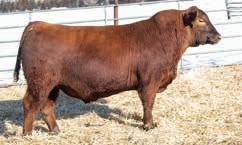



Leland Red Angus
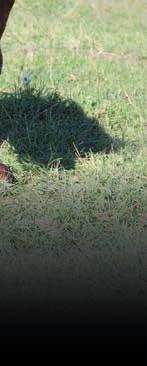


Friday, March 10, 2023
1 p.m. MT
• At the Ranch
• Sidney, MT
185 Bulls • 50 Heifers
BD: 9-9-21
KOESTER INSIGHT 1135 (#4604421)
Super-balanced EPDs across the board that excel in every trait category! His beautiful dam has a picture-perfect udder and disposition that he will pass along to his daughters. He catches your eye in the bull pen and impresses visitors.
Progeny sell from ...
Lorenzen Warrant 8273
BD: 8-11-21

KOESTER WARRANT 115 (#4604451)
This Warrant x Merlin is a powerhouse with expressive muscling, length and dimension. He ranks in the top 4% for GM backed by impressive performance and carcass traits. He’s easily a standout and in the pen and on paper!
• Lorenzen Insight 9917
Bieber CL Stockmarket E119
Leland Full House 7465
• VGW Megatron 403P
• LARR Drive Time 9542
Request a catalog:
Steve & Tracey Koester
Steele, ND
(701) 400-1611 cell
KoesterRedAngus.com

koester@bektel.com
 1A
1A































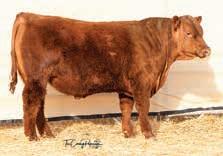
Putting it all together—phenotype, strong EPDs, carcass data, and outstanding maternal qualities—takes a focused effort on selecting just the right mix of genetics to result in outstanding cattle. The Kenny family, Schaller, Iowa, has spent decades building an Angus herd that truly puts it all together and is building their name in the beef industry.

Brian and Sue Kenny started their Angus herd in 1990 by buying cows from a herd that was dispersing in Webster City, Iowa. They added to the herd with several embryo packages from Van Dyke Angus, Manhattan, Mont., known nationwide for top-quality maternal genetics. The Fabius Barbaramere

cow family, owned by Dean Hoaglund, Bloomfield, Iowa, was added and has since left numerous top females in the herd to this day.
“We wanted ‘front pasture quality cattle’ that are in high demand, easy to sell and pleasing to the eye. Producing a top-quality product for our customers that will provide a consistently superior experience for the consumer,” Sue Kenny said. “We did our research, and there are a lot of other breeds, but we wanted to go down the Angus road, specifically.”
The family was drawn to the vast number of options in the Angus breed. “We continue to be excited by the many avenues available when it comes to Angus cattle, as there is no cap on what we feel can be accomplished, from calving ease to performance to end-product merit, phenotype, and maternal characteristics,” Dru Kenny, Brian and Sue’s youngest son, explained. “This gives our customers the flexibility to choose the path that will make them most successful, whether that is to retain replacement
Kenny Angus strives for balance in breeding high-performance Angus cattle.females, sell their calves as feeders or finish them out. The options are limitless and that is what excites us and our customers.”
Over the years, they built up the herd by keeping many of their own heifers. The Kenny family had sold bulls and females through consignment sales; taking cattle to National Western Foundation Female Sale, Sioux Empire Farm Show, Iowa Angus Bull Test, and Iowa Beef Expo; and participating in a group bull sale before launching their own sale in 2018.


 above The Kenny Family (l-r): Kate, Paisley, Dustin, Kolt, Dru, Sue, Tyler, and Brian.
above The Kenny Family (l-r): Kate, Paisley, Dustin, Kolt, Dru, Sue, Tyler, and Brian.
“We’ve also had a big demand from cattle producers that own other breeds,” Sue said. “Guys who are looking to raise half-bloods or club calves—our females are a foundation for those breeders.” The family also raises corn, soybeans, and Jolly Time popcorn.
The herd always welcomes a new donor cow. Females calve in December and January, and calves are weaned around Memorial Day. After the females have been artificially inseminated or had embryos implanted, they are taken to the Sandhills of Nebraska, where there is an abundance of grass for grazing. Meanwhile, half of the herd stays in Iowa to graze. The females return to the farm headquarters in
late October, prior to calving, where the development center is located. “We wanted to test whether the cattle would hold up in bigger county, and they have thrived in both Iowa and Nebraska,” Sue explained.

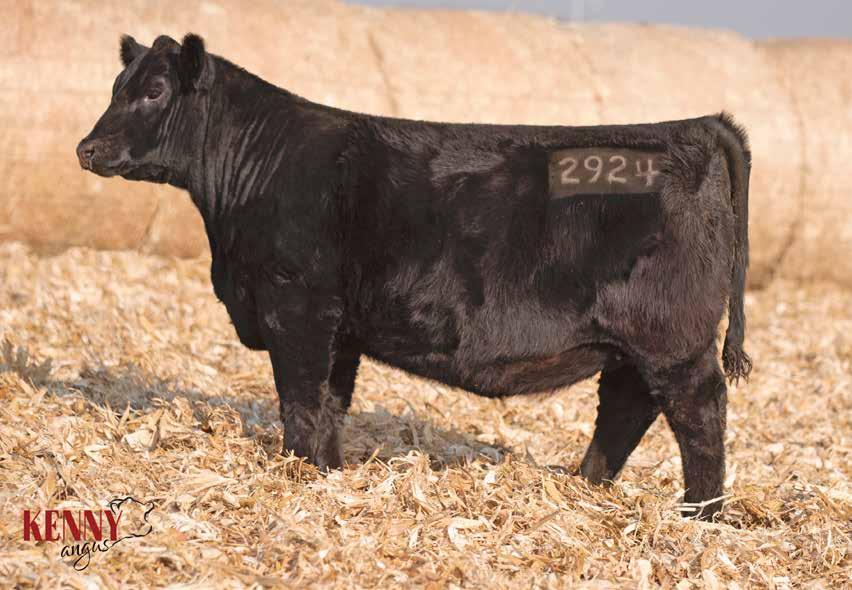
The family chops corn and triticale for silage, along with ground hay, that’s fed to the developing bulls, replacement heifers, and cows in a mixed ration. Although they raise excellent corn in the area, the Kenny family opts to sell the corn
and feed hay in a high roughage ration to the breeding herd, to ensure longevity, sound feet and legs, and high fertility.
“One of our favorite projects is the hunt for the next great sire or
female that we feel will benefit us and our customers,” Dru said. “We focus on ensuring that our cattle have superior feet, performance, and calve easily for our customers to succeed. We want the cattle to be effective for both our own operation and for our customers.”
Dru visits several bull studs before selecting sires for inseminating the herd. The Kenny family likes to see a bull before committing to using him on their herd.

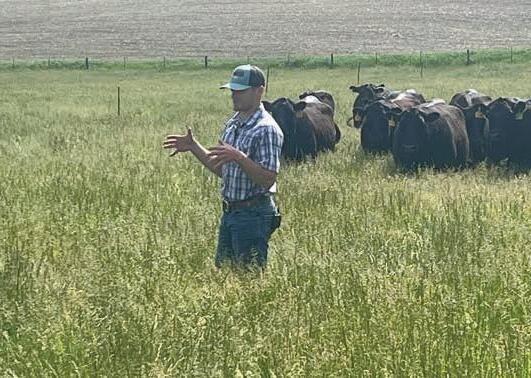
Sires selected for breeding to Kenny females must possess the ideal look, as well as excel in terms of genotype, curve-bending performance, and high-end product merit. At this year’s sale, the family will be selling bulls and replacement heifers out of Basin Safe Deposit 9324, Baldridge Pappy, Connealy Clarity, EXAR Grenade 9152B, SS Enforcer E812, SydGen KCF Gavel 8361, and more.

The Kenny family likes to have as much data available on their cattle as possible, and they utilize carcass ultrasound and genomic testing, which includes parent verification, in addition to taking birth weights, weaning weights, yearling weights, and scrotal measurements. All bulls are semen tested before the sale.

“We like to have the cattle hit the top 25 percent of the breed, on average, in as many EPDs as possible,” Sue said. “We have lots of bulls with high numbers for certain traits, but we don’t want to sacrifice one thing to get an extreme of another. We want a balanced animal – functional cattle that really perform for our customers and get the job done with few problems.”
Docility is another trait the Kenny family strives to maintain in their cattle. The cattle are checked multiple times a day for heats, and frequent interaction helps boost their docility. The Kennys have been utilizing AI and ET for more than 30 years, with the express goal of keeping their cattle on the cutting edge of genetics for their customers.
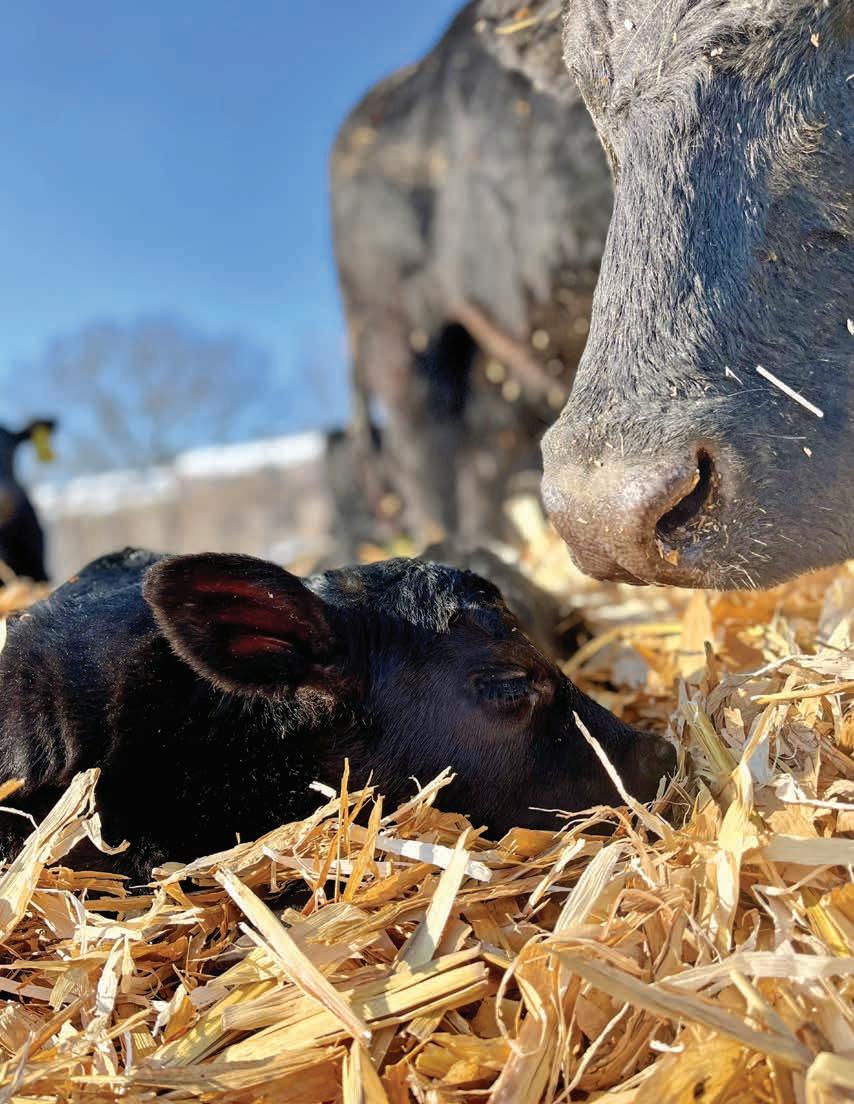
At the 2022 sale, the Kenny family sold their bull Kenny Rogers to ST Genetics for an all-time high (in Iowa) of $135,000. Today, there’s a waiting list for Kenny Rogers semen. The family is excited to see how his calves turn out. “He’s performing on all cylinders, impressive growth, good phenotype, moderate birthweights, and favorable carcass genetics. Plus, he’s out of a powerhouse cow,” Sue stated.
At the annual sale, held the second Friday in March, the Kenny family will sell approximately 50 bulls, 15 replacement heifers, 15 bred cows, and pairs. Bulls are about 15 months of age when sold and many are housed at Kenny Angus until delivery around May 1. The Kenny family has sold cattle as far west as California and Utah, and as far east as Pennsylvania, and they offer free delivery nationwide. Last year, through hosting the sale on DV Auction, there were viewers from 31 states and Afghanistan watching the sale.
“We also have a program called ‘Leave ‘Em & Breed ‘Em’ for our replacement heifers. If a customer buys a replacement heifer and would like us to AI her and deliver her after breeding, we will use any bull of their choice,” Sue said.
Customer service is very important to the Kenny family. If a problem creeps up with a female or bull,
the family wants to take care of it, whether that’s providing a new bull or giving the customer credit for the next year’s sale. The family says they’re fortunate to have repeat customers because their bulls get the job done.
“We don’t sell hundreds of bulls like some breeders, which allows us the ability to put extra focus on customer service,” said Sue. Dru agreed. “Our mission is to build a product and service that allows our customers to maximize their profits and be happy when selling their calves and visiting their summer pastures,” Dru explained. “We strive to build great relationships with our clients so that we can create lifelong customers, which we feel is achieved by treating them with the respect we would want to be treated with and by providing real, long-term results that help make them profitable.”
The Kenny family’s commitment to beef production runs deep, with the sons being fifth-generation beef producers. The entire family helps


out in the operation. Brian and a hired hand take care of calving chores each morning, tagging and weighing calves. Sue and Dru do the feeding and they all chip in with calving checks around the clock. “Dru graduated from South Dakota State University in 2017 and returned to the farm, and Brian and I are wanting to slow down a bit, so it’s working pretty well,” Sue said.
Oldest son Dustin serves as the auctioneer on sale day, while his wife, Kate, helps clerk. They have two children, Paisley, age 8, and Kolt, age 5. Middle son Tyler lives in Des Moines, but also assists with clerking at the sale and larger projects such as freeze branding, taking photos, and recording videos of the sale cattle throughout the year.
learn more kennyangus.com
KENNY ANGUS ANNUAL BULL AND SELECT FEMALE SALE: March 10, 2023, at the farm, Odebolt, IA
above Iowa Governor Kim Reynolds visited Kenny Angus.
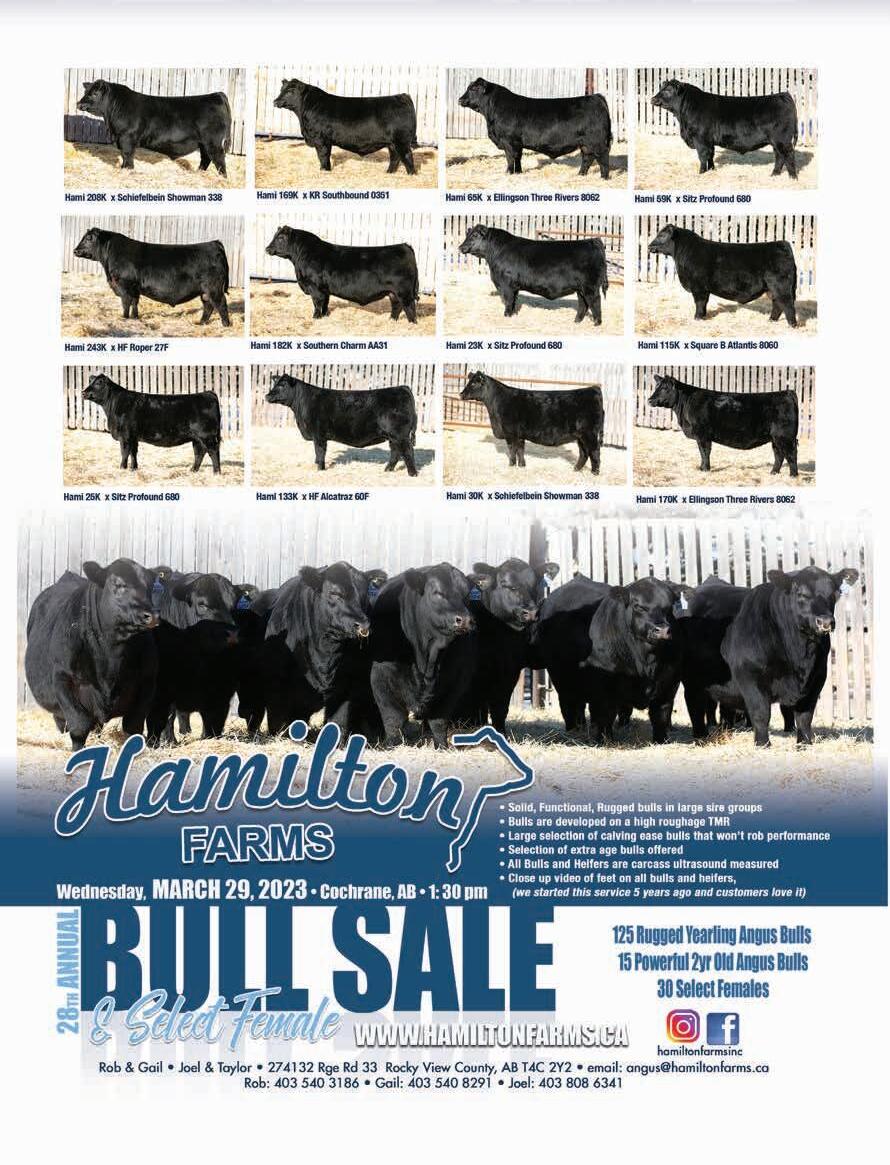
























Functional forage and pasture.
It never fails. When fall rolls around, the pairs on pasture get restless. A few more cows begin to reach over the barb wire and calves are finding holes in fences you didn’t know were there. The quality and quantity of grass in nearly all pastures has drastically decreased by this point, and cows are ready for a change. Though we haven’t reached that point in the year yet, it’s a pertinent time to think ahead to improve that scenario now.
Grazing lands that have been over-grazed or not rotated become dominated by invasive, cool season grasses. Those grasses go dormant mid-summer and lose their nutritional quality and palatability by late spring. Along with over-grazing, broad spectrum chemical application for weeds creates a monoculture of grasses in our pastures. Our herbicide options have never been better, and they are necessary in many scenarios. They are great
tools to promote grass growth, however, when we kill unwanted broadleaves, we also kill beneficial broadleaf plants. Once the massive infestations of thistle, buckbrush, or any other invader weeds are under control, I suggest switching to spot spraying or improved grazing management. This will ensure a more diverse plant community for all to thrive synergistically.
If your pastures are well-managed and weeds are only spot sprayed,
 contributed article by Justin Fruechte, Product Expert - Ag Millborn Seeds, Brookings, S.D. millbornseeds.com
contributed article by Justin Fruechte, Product Expert - Ag Millborn Seeds, Brookings, S.D. millbornseeds.com
consider trying to add a legume to your grass. Great legume species to consider include grazing alfalfa, red clover, cicer milkvetch, sainfoin, ladino clover, and alsike clover. Not only can they add protein to the cow’s diet while grazing, but they will also provide more growth in the fall and can fix nitrogen for your grass species to utilize. Consider dropping your nitrogen application to your pasture, and instead, grow better forage and sequester your own nitrogen.

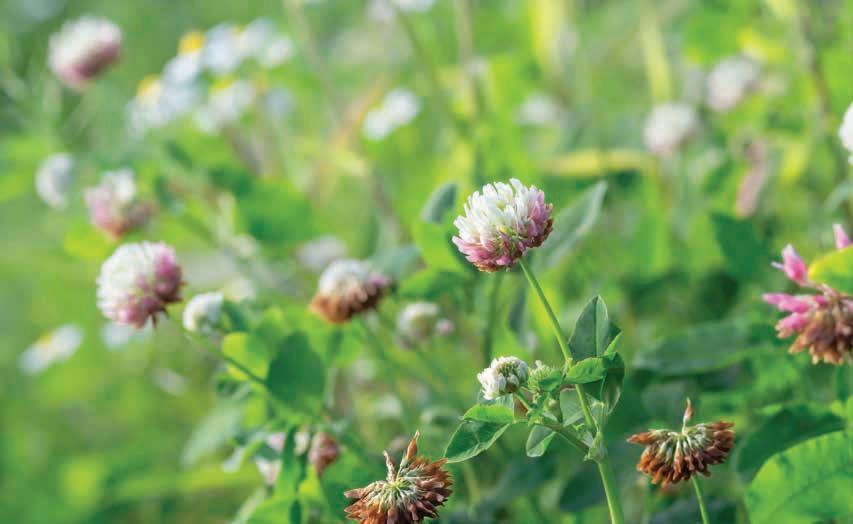

I understand if you have land serving as a pasture, most likely it’s not farmed for a reason. The ground may be too rocky, too wet, too light, or too steep. So how do you go about planting legumes in it?
Frost seeding in early spring is a great way to seed legumes when broadcasting into pasture. Early spring generally provides some great planting windows with numerous freezing and thawing cycles. If your pastures thaw out and there is snow in the forecast, hook up a spinner spreader and broadcast legumes onto your pasture. As the weather warms up in the spring, the legumes
will have seed to soil contact and warm enough soil temperatures to allow the legumes to start growing and provide additional quality forage.

The bottom line is this: by building a more diverse pasture, you will build better quality grazing. As your cows eat better, they milk heavier, and your calf weights increase. This gain, in combination with the lack of fertilizer you’ll pur-
chase, helps you become a more profitable cattle producer.
Photos courtesy Millborn Seeds learn more millbornseeds.com Millborn Seeds, Brookings, S.D. The team of folks at Millborn Seeds have roots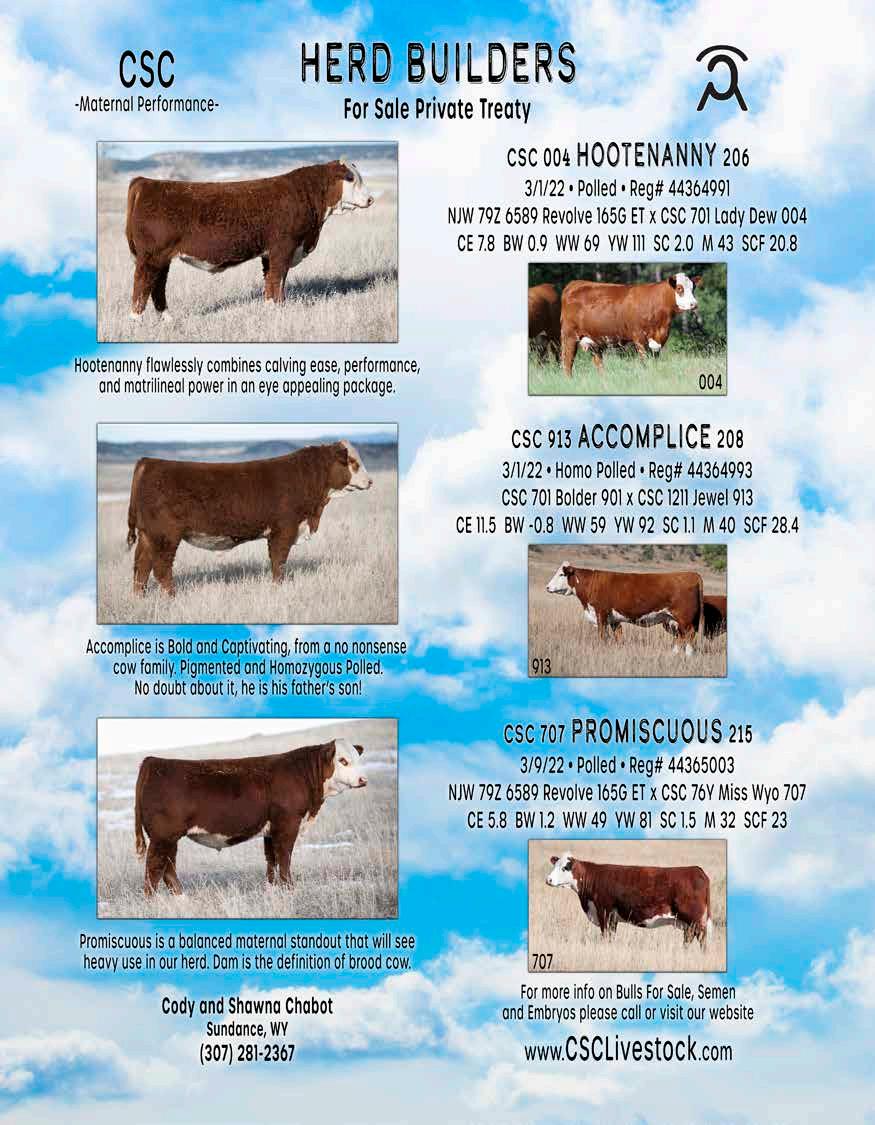
APRIL 1, 2023



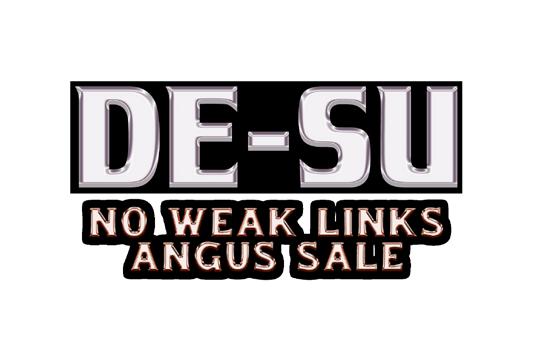



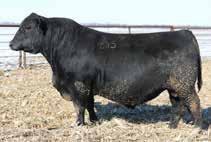

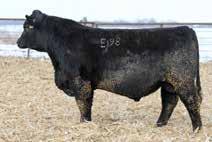
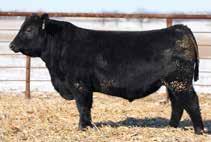


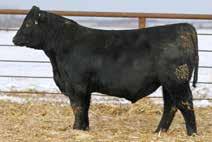





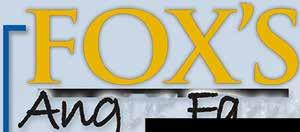









SULLIVAN’S
• REPLENISHES NATURAL OILS
• VITAMINS FEED THE SKIN AND HAIR
• PROPER BALANCE OF NATURAL OILS

• LIGHT WEIGHT & FAST ABSORBING
Scientifically formulated hydrating and nourishing conditioner that uses the hair and skins natural oil make up to formulate the best replenishment of the natural oils and vitamins back into the hair to promote hide and hair health as well as hair growth and strength.
SULLIVAN’S
NOURISHING SHAMPOOTM
• BEST SELLING SHAMPOO
• SCIENTIFICALLY PROVEN TO CREATE HAIR VOLUME
• CONTAINS SULLIVAN’S VITA HAIR
VITAMIN PACKAGE
Vita Hair Volumizer™ Foaming Shampoo is formulated with a natural plantbased proprietary surfactant technology which creates an opposite acting polar electrical charge within each hair strand that actually pushes every hair follicle apart. This prevents the hair from sticking together, and actually springs it loose, making each hair follicle stand on end for a noticeable diference in hair volume and body.
Born and raised in the cattle industry, Brent and Sharlyn Sieck know well the ins-and-outs and ups-and-downs of a life devoted to developing a thriving cow herd. However, the Siecks, owners of a longstanding cattle operation near Lincoln, Neb., never dreamed their involvement in the agriculture industry would lead them to the path they traverse today.

For the past five years the couple has navigated an entrepreneurial journey working to create, manufacture, and market a heat detection system for cow herds. It shouldn’t have been a surprise to the Siecks that they became inventors and innovators. It’s simply in their nature. “We are kind of do-it-yourselfers. I put in my own embryos, and I do our own c-sections and things like that,” Brent Sieck said. Brent’s wife, Sharlyn, agreed, “We are a find-away, make-a-way kind of people.”
The saying, necessity is the mother of invention, rings true for the Siecks. Brent and Sharlyn wanted to find a more effective and convenient way to catch their cows in heat. They were frustrated with all times they were forced to choose between being at their farm checking for heat or making it to family obligations. “Being tardy to a kid’s
activity, or sometimes missing it completely because of heat checking was a reality for Brent,” Sharlyn Sieck explained. “But the tipping point was when our best donor was in heat, but we kept missing it. Brent really wanted to find a more efficient way to heat check.”
Their desire for a better way led the Siecks to brainstorm ideas. One Sunday morning, while reading the business section of the local paper, Brent came across a story that caught his attention. An area business was developing mats equipped with embedded sensors to place at the entrances of hog units. When a person stepped on the mat, the sensors sent a signal to the producers to alert them someone had entered their facility.
The idea of a pressure triggered
By Cheryl Kepes photos courtesy Brent and Sharlyn Sieck and Abby D PhotographyBrent and Sharlyn Sieck bring their dream of an innovative cattle heat detection and notification system to life.


sensor sparked Brent’s interest. The Siecks reached out to the company developing the mats and the heat detection system slowly started to take shape. “We went through several different changes to come up with what we have now – but that is how that idea started. It was from me reading the paper,” Brent shared.
The idea endured years of development and testing. Numerous prototypes, trial and error, and meticulous finetuning ultimately led to the HeatSiecker heat detection system. The HeatSiecker system, named with a nod to its creators, allows producers to have access to real-time mount detection via a phone app.
A patch equipped with a sensor is applied to the cow with special adhesive. The pressure applied to the sensor when a cow is mounted causes the sensor to send a signal to an antenna which transfers the information to an app. The number


of mounts and timing are at the producers’ fingertips, eliminating the need to constantly check for heat visually.
The antenna can receive signals from the patches from one to two miles away without a clear line of sight. If the antenna has cell service, the producer will receive the mounting information, regardless of whether the cow wearing the patch is within range of cell service. The system does not require Wi-Fi.

The Siecks developed multiple prototypes of the patch, adhesive, and system before they arrived at the product that’s on the market today. The company the Siecks work with to develop part the HeatSiecker system, assisted with the rigorous testing of products. The patch, sensors, and batteries were run through a machine to test their resilience in extreme temperatures. The antennas endured significant testing as well. Additionally, the Siecks experimented with several adhesives before landing on the most effective glue.
When the Siecks decided the HeatSiecker products were ready for testing on a cow herd, they started close to home. “Our very first testing was on our own herd and on a neighbor that was close so we could monitor that,” Brent explained. “Once we had things going in the direction we wanted, we actually sent out 1,000 patches one fall and gave them to several producers in five or six different states.” Dispersing the system to a variety of geographical locations across the country allowed the Siecks to track the performance of the system in different climates and environments.
right HeatSiecker patch.Brent and Sharlyn are the first to admit they are not technology gurus. However, they are savvy at finding and connecting with experts to help them reach their goals. Due to advancements in technology, the Siecks were able to capitalize on new ways for producers to access the heat detection information that would not have been possible in the past. According to the HeatSiecker website, “When a cow is in heat, and other cows mount her, the patch senses the pressure and that individual cow’s data is sent from the HeatSiecker Gateway Antenna to the customer’s cell phone. The producer can prioritize insemination based on real-time data and detect the perfect breeding window.”
A majority of the HeatSiecker products are manufactured at the Siecks’ farm in Martell, Neb. The rest of the system is made elsewhere in Nebraska and in the United States. The Siecks want to keep all aspects of the business as local as possible.
Four part-time employees work alongside Brent and Sharlyn to manufacture the HeatSiecker patches.
“Many of the steps are done by us personally and some within a 50-mile radius of our farm,” Brent stated. “We have had custom machines made specifically for our manufacturing so
that we do not have to outsource production.” The couple personally packages and ships all orders.
The Siecks converted half of their barn, previously used to store farm machinery, to house the lasers, welders, and other equipment needed to manufacture the patches. The HeatSiecker patches are created and assembled in the remodeled section of the building. The other half of the barn remains calving pens.
Manufacturing the product adjacent to their cattle operation serves as an inspiration and motivation to the Siecks. From the beginning of their journey until now, their goal has been to create a system to benefit fellow cattle producers.
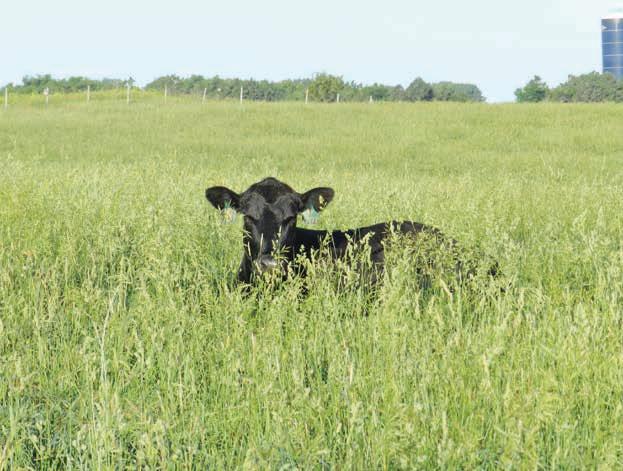
The HeatSiecker system launched in full force in January 2022. Since that time producers in 30 states have purchased the system. “It has been so satisfying knowing we are able to help people just like us,” Sharlyn shared. “We have enjoyed hearing success stories and look forward to many more. We have been blessed with the best customers.”
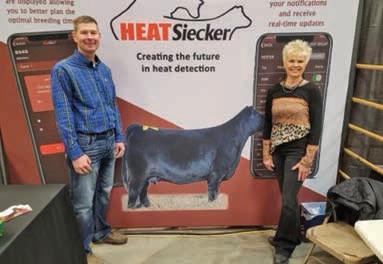
Positive feedback from their customers fuels the Siecks to continue moving forward with their business. The desire they had five years ago to come up with a solution to their ongoing dilemma, has now become a reality for them and others in the cattle industry. “We used to go out with a spotlight at 10 o’clock at night and try to check cows and see what was going on and we don’t have to do that anymore,” Brent said. “We have had several people say, ‘We were at our kids’ ballgame and got several notices on our phone.”
Sharlyn added, “I think the exact quote was, ‘This is so cool! I’m at my daughter’s basketball game and I can see what cow is in heat.’”
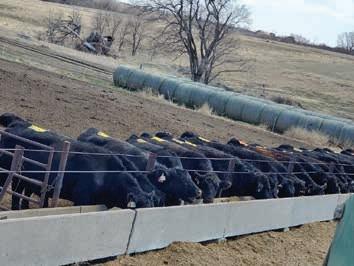
The years of working on the HeatSiecker system has consumed much of Brent and Sharlyn’s time but their dedication to managing their cow herd has never wavered. Well-known in the cattle industry for their champion club calves, the Siecks have started to transition their cow herd to focus on maternal genetics. They manage around 300 head of momma cows specializing in Maine, Maintainer, Simmental, and low-percentage Simmental cattle.

When a cow is in heat and other cows mount her, the patch senses the pressure and that individual cow’s data is sent from the HeatSiecker Gateway Antenna to the customer’s cell phone. The producer can prioritize insemination based on real-time data and detect the perfect breeding window.
Even with all their years in the cattle business, the Siecks were surprised with some of the data collected with the HeatSiecker system. “There is so much that happens at night – it is amazing,” Brent explained. “I had a guy who worked at ABS for 30 years breeding cows and he started using our system and he said, ‘I learned more about cows coming in heat in one breeding season than I have in the last 30 years in all my experiences.’”
What surprised some producers, including Brent, was how much activity occurs at night and how frequently a cow gets mounted. “There is just a lot that a guy misses – there is so much that goes on that you don’t know,” Brent said. “It is amazing how many times those cows get mounted. The record right now that we know of so far is 176 times. But that’s not typical. However, it is not uncommon for it to be a 100 or a little more. Especially when cows are synchronized because then you have a lot more going on at once.”
As the Siecks reflect on their journey, their hearts overflow with gratitude. “We are thankful to our family and friends for their support,” Brent and Sharlyn expressed. “We are appreciative to those involved with HeatSiecker who are experts in areas we are not and for their willingness to help us. Thanks goes out to our investors and bankers for believing in us, and to our customers who buy our product.”
The Siecks look forward to what the future holds for their business, while cherishing the blessings

along the way. “We are grateful God planted the seed to start this business and for the path he has guided us through this venture,” Brent and Sharlyn shared.
The task of developing the heat detection and notification system seems to be in the Siecks’ rearview mirror. Nonetheless, much work remains. The Siecks now forge forward, blazing a trail for the future of their business never losing their “find-a-way, make-a-way” spirit.
learn more heatsiecker.com





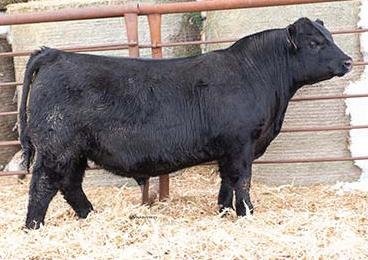
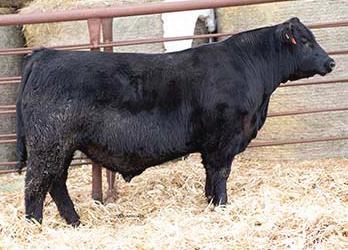



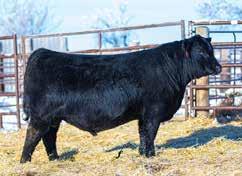



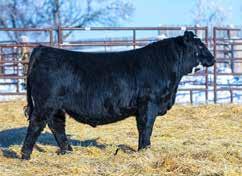
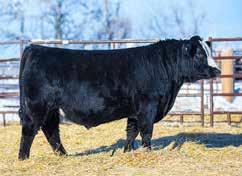












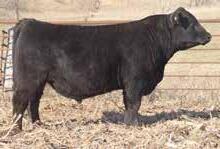
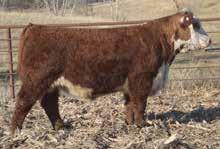


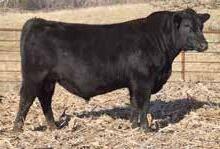


Reckoning is becoming the outcross pedigree sensation among breeders looking to improve “show-ring” presence, foot & structure quality, muscle mass, and body dimension!
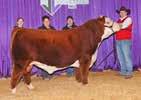
Optics is becoming an extremely popular heifer bull who’s leading progeny are topping Hoover’s, Panther Creek, & RAML’s herds! Added frame and performance for a heifer bull with outcross pedigree to most popular sires! Make sure you research him.






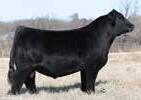












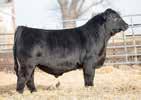






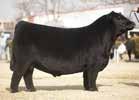



Health & Reproduction questions answered and explained.
contributed article by Dr. Vince Collison Collison Embryo and Veterinary Services, Rockwell City, Iowa collisonembryoservices.com

Typically nutritional deficiencies are rare, but recently we had a case where cobalt deficiency was probably part of a problem. There is perhaps more to this case than just cobalt deficiency, but it is likely a major component to the problem. Over the last several years this herd had a history of Ostertagia, a parasite that can affect adult cattle. Treatment with injectable Dectomax would improve the symptoms, but it continued to pop up as a problem over time. There also was a history of Johne’s in this herd that started after the purchase of some bred heifer replacements. This herd had also experienced a significant drop in pregnancy rate to the AI program and overall decreased pregnancy rates after the bulls were turned out.
This past winter the owner had experienced a fairly high death loss in his cows due to loss of condition and some with some diarrhea. He had written some of this off initially due to his previously mentioned problems of Johne’s and parasites, but contacted us as the death loss became higher than normal. He also had previously purchased heifers that had originally come from Kansas.
Diagnostics included drawing 80 blood samples from the part of the herd that seemed to be experienc-
ing the most problems. These cows were also wintered in a different field than the rest of the herd. We initially suspected Anaplasmosis with the high death loss and a history of purchasing cattle from Kansas which has more endemic Anaplasmosis than Iowa. The blood testing did not turn up much for Anaplasmosis or Johne’s disease. So, we had to re-evaluate what we were dealing with.
The next thing was to post a cow that had a rapid course of symptoms and died fairly quickly. This cow had a pyelonephritis, which is usually a poor prognosis and typically an incidental disease. To rule out the possibility of Leptospira we tested for this on 20 of the original 80 samples. This also came up with nothing.
At this point we spent several hours driving through the cows trying to examine and look for other clues. One noticeable finding was the cows had fairly dull haircoats along with a significant number with lower body condition. Lameness was also a problem. The impression was there was a deficiency occurring, potentially copper. This producer was feeding a custom mineral mix and when we looked at the label there was copper listed, but at lower levels than typically listed on most cow minerals. There was also nothing listed for cobalt.
Cobalt is a key component of vitamin B12 (cobalamin). B12 is essential for the formation of red blood cells and DNA. It also is important in brain function and nerve health. Lack of vitamin B12 can be responsible for a generalized condition of ill thrift in cattle. Symptoms such as anemia, poor growth, diarrhea, and poor haircoat can all occur with cobalt deficiency. Diseases that present similarly are Johne’s, parasitism, malnutrition, and deficiencies in copper. One other issue with vitamin B12 deficiency, is the cattle will be more susceptible to parasitism, which we had seen with this herd.
Vitamin B12 is manufactured by the microorganisms in the rumen. So, B12 deficiency is fairly rare in cattle, but if there is not enough cobalt in the diet it will become an issue. Supplementing with cobalt will improve symptoms within several days. In this case, the owner bought salt blocks containing cobalt and noticed a significant difference in the cattle within a couple days. The other thing that he did was change to a commercially available mineral for cows. He has reported con-
tinued improvement in the cows and also noticed the consumption of feed by the cows has improved dramatically.
Cobalt deficiency can also occur in areas where cobalt is deficient in soils or where pastures have had too much lime applied. Cobalt can also be antagonized by too much manganese, zinc, or iodine. In this case, it is probably a matter of being deficient in the diet.

Nutrition is a complex subject. There are many interactions between trace minerals that can cause problems due to antagonisms. When you buy commercially available mineral from a reputa-
ble source, there is a lot that goes into the formulation. Most of these companies have people with PhDs or masters in nutrition working on these products. If there is a suspected problem, work with your local nutritionist and veterinarian. Also, don’t hesitate to reach out to the company that provides the mineral product. They can offer some valuable assistance in trying to figure out the problem.
learn more collisonembryoservices.com
Dr. Vince Collison is co-owner of Collison Embryo and Veterinary Services PAC in Rockwell City, Iowa.





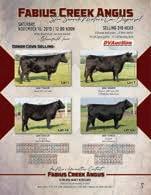
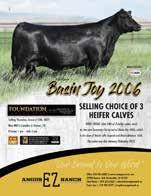

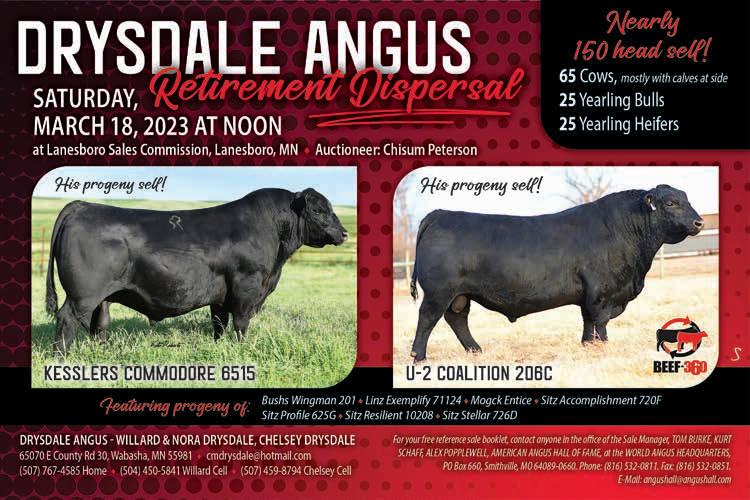
South Devon and South Devon influenced composites are a total outcross to current commercial cattle breeding programs. Research proves crossbred females produce an average of 1 additional calf and 600 more pounds of weaning weight in their lifetime compared to straightbred dams (NBCEC Sire Selection Manual). For this reason, DLCC is committed to providing crossbreeding solutions and outcross genetics to commercial cattlemen.






























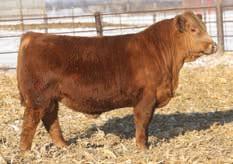

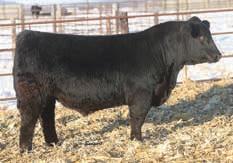

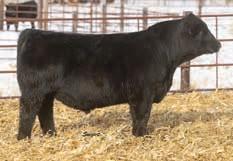

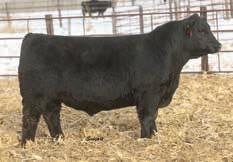








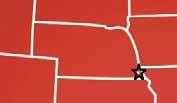





Saturday • 1 PM
18, 2023
Green City Livestock Market • Green City, Missouri 94 Age Advantaged Fall Bulls with an average $C of +300, an average Marbling score EPD of +1.02 and an average YW EPD of +138 • 40 Spring Yearling Bulls with an average WW EPD of +79 and average YW EPD of +140 • 18 Powerhouse Fall Yearling Females with an average $C of +329, an average $B of +204, an average Marbling score EPD of +1.30 and an average YW EPD of +141 • 5 Spring Yearling Heifers with an average $C of +333, an average Marbling score EPD of +1.20, an average WW EPD of +82 and an average YW EPD of +149 • 2 Special Embryo Features
THE LARGEST AND BEST SET OF BULLS EVER OFFERED BY BRINKLEY ANGUS RANCH INCLUDES: 28 Sons of the Brinkley $C Leader De-Su Volunteer • 21 Sons of the Brinkley $M Leader Connealy Upscale • 13 Sons of the $75,000 Deer Valley Optimum and 8 Sons of Deer Valley Growth Fund • 8 Sons of Deer Valley Growth Fund headlined by four full brothers to the $140,000 B A R Dynamic and a spring yearling full sister to him • 5 High Marbling G A R Home Town sons and five daughters headlined by a B A R Rita breed-changer with a +384 $C • 5 Superstar Sons of the $150,000 now-deceased Woodhill Relevance • 3 High Growth Sons of K C F Bennett Exponential and five fall yearling heifers • 2 Promising Sons of Poss Maverick PLUS two fall yearling heifers from a daughter of the $425,000 G A R Progress 830
B A R RITA 1743-7488

5 HOME TOWN DAUGHTERS WITH EXCEPTIONAL EPD PROFILES
W A F BURGESS 2176-7488
W A F BURGESS 2196-7488
AAA 20402732
• G A R HOME TOWN X NORTHSIDE – FALL NUMBER 1 $C +384 & NUMBER 1 $B +234
• FROM A MATERNAL SISTER TO THE $150,000 HALF INTEREST NWSS FOUNDATION FEMALE RECORD-SETTER


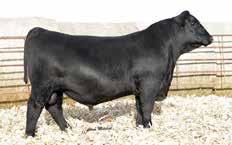




20500040
• G A R HOME TOWN X XFINITY – SPRING NUMBER 2 $C +354 & NUMBER 1 $B +216
• DONOR DAM HAS SIX SONS AND THREE DAUGHTERS THAT SELL
20510297

• G A R HOME TOWN X XFINITY – SPRING NUMBER 1 $C +363 & NUMBER 2 $B +214
• DONOR DAM HAS SIX SONS AND THREE DAUGHTERS THAT SELL
AAA 20402712
• DEER VALLEY OPTIMUM X SYDGEN ENHANCE - – FALL NUMBER 1 $C +353

• CARRYING ON ONE OF THE OLDEST AND MOST PRODUCTIVE B A R PATHFINDER® LINES
The Ultra-elite Female Offering Starts with a December 2022 daughter of the $500,000 Connealy Craftsman from the dam of the $240,000 SydGen KCF Gavel PLUS a heifer pregnancy from the young Brinkley Upscale maternal sister to Connealy
B A R FOREVER LADY 1746-9246
• DEER VALLEY OPTIMUM X NORTHSIDE X CONNEALY COOL
• DAM IS A MATERNAL CORNERSTONE OF THE BRINKLEY DONOR PROGRAM




[ ] OPTION 1: All Risk Mortality (ARM)–100% Indemnity Bulls & Females
Livestock Mortality Insurance is extended to indemnify the livestock owner for loss as a result of the death of an animal from natural causes, disease, accident or humane destruction to alleviate incurable and inhumane suffering resulting from a covered peril. Short term policies available.
[ ] OPTION 2: ARM + Accidental External Injury (ACC)–80% Indemnity Bulls Only
Mortality coverage plus coverage for injury causing Permanent Infertility (broken penis or stifle). Requires a current Veterinary Certification (not over 30 days old)
[ ] OPTION 3: ARM + Accident Sickness & Disease Infertility (ASD)–80% Indemnity Bulls Only
Mortality Coverage plus coverage for injury causing Permanent Infertility (broken penis or stifle). In addition to coverage above, this also includes Total and Permanent Infertility (fever or infection causing infertility or disease). Requires a current Breeding Soundness Evaluation (not over 30 days old)
[ ] OPTION 4: ARM + Comprehensive Infertility (COMP)–85% Indemnity Bulls Only
Covers all of the above, plus Frozen Testicles, Testicular Degeneration and infertility caused by abnormalities. Also pays 20% of insured value for temporary infertility of 21 days or more. This does not replace the Breeder’s Guarantee. Requires a current Breeding Soundness Evaluation (not over 30 days old)
Gary and I have been married for 46 years and live on my third-generation farm by Hitterdal, Minn. We have three grown sons and nine grandchildren. We raise registered Red Angus cattle and some commercial cattle. We calve starting mid-January until the beginning of March. Our annual bull sale this year is on March 16th at our ranch. We are selling 75 bulls with our partners Rivers Edge Cattle Co., Park Rapids, Minn., and Prairie Red Angus, Hawley, Minn. We try to concentrate on the maternal side, raising great mothers with good udders. We AI both cows and heifers one round and then turn out cleanup bulls. We also try to put 50 embry-
In addition, we raise high-quality butcher beef and have sold our beef to local restaurants. We use and enjoy our horses on the ranch working the cattle. Chores and calving can be very challenging up here in the North country, but we have a great crew to help to get
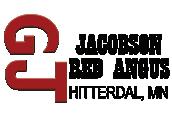

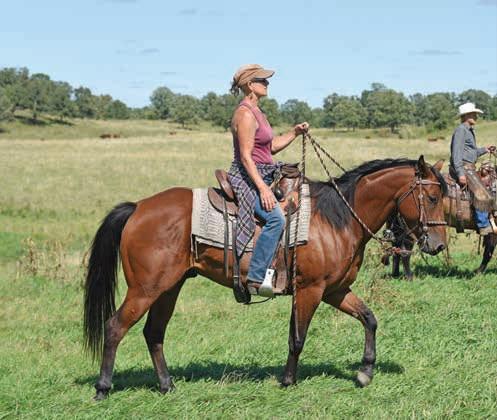
What is your least favorite job in the kitchen?
“

Well, I would have to say clean up and also deciding what to prepare daily. I do appreciate suggestions.
What is your most requested dish?
I think I’d have to say my corn and bean salsa I’ve been making for several years. I enjoy gardening and raise my own tomatoes, peppers, onions, and sweet corn. Also, my bacon wrapped jalapeño poppers on the grill are often requested.
Val Jacobson
2 lbs. Velveeta cheese (melted)
1 can cream of mushroom soup
6-8 oz. salsa or 1 can of Rotel (tomatoes and green chilies)
1 lb. browned seasoned hamburger with onion
8 oz. sour cream
Put in slow cooker on low for three to four hours. Add sour cream the last 15 minutes. Serve with tortilla chips or crackers.
What is your favorite cooking tip/trick?
Being prepared and stocking up on basic ingredients. I like keeping it simple with just a few ingredients.
Where did you learn to cook?
My mother and both grandmothers were all good cooks. Also, I enjoy trying new recipes and experimenting in the kitchen and on the grill.

ANNUAL BULL SALE: Thursday, March 16th, 2023, at Jacobson Ranch Contact for sale catalog 701-361-3189.

Val Jacobson
Val Jacobson
2 lbs. ground beef (formed into balls)
1 finely chopped onion
¼ tsp. salt
pepper to taste
1 can tomato soup
3 T. lemon juice
¼ c. packed brown sugar
1 can pineapple chunks (drained)
Brown onion and ground beef (formed into balls); add salt and pepper. In a glass bowl combine tomato soup, lemon juice, and brown sugar. Add to pot and boil over medium heat for five to ten minutes. Pour over cooked meatballs. Add meatballs and sauce to a slow cooker and cook on low for three to four hours. Add the drained pineapple during the last half hour.
Crust:

1 c. flour
½ c. butter



½ c. chopped walnuts
Filling 1:
8 oz. cream cheese
1 c. powdered sugar
8 oz. Cool Whip
Filling 2:
1 large pkg. instant chocolate pudding mix
3 c. milk
Topping: 8 oz. Cool Whip chopped walnuts
Mix the flour, butter, and walnuts to make a crust; press into a 9x13 pan. Bake crust at 350 degrees Fahrenheit for 10 minutes; then cool. Next, beat together cream cheese, powdered sugar, and Cool Whip. Spread mixture on cooled crust. Beat or shake instant chocolate pud- ding mix and milk. Pour over cream cheese layer. Spread remaining 8 oz. of Cool Whip, top with chopped walnuts and chill.
stockmanmag.com

correlates with age at puberty in
ments
proven
• 45 Red Angus and Percentage Bulls (13-20 months old)
• Registered Open Heifers, Fall Bred Heifers/Cows
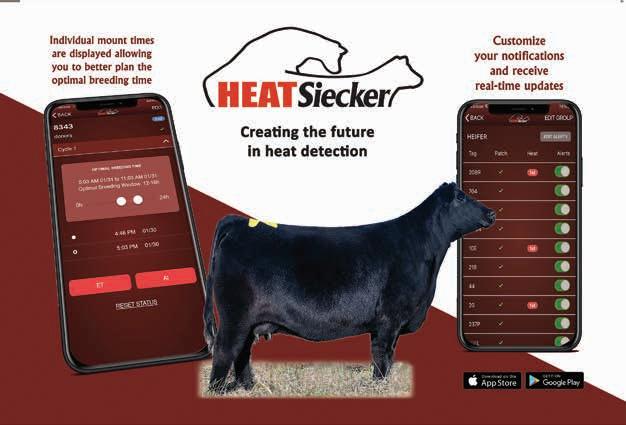
• Spring Pairs and Bred Females (registered and commercial)
• 50 Commercial Red Angus heifers ready to breed

Sale Location: JS Ranch • Harris, Missouri
Sale Time: 1 p.m.
A.I. Sires…PIE One Of A Kind 842, RRA One and Only 733, WFL Merlin 018A, H2R Profitbuilder B403, GMRA Tesla 6214, 3SCC Doman 163A, Franchise, Finished Product, Seneca, Brunswick, Profit Maker, Lacy Centrepoint and Aviator 7126.
Nathan Rogers: 660-748-6350
Raymond Rogers: 660-953-1562
JS Ranch
Cody Holt: 660-748-8352




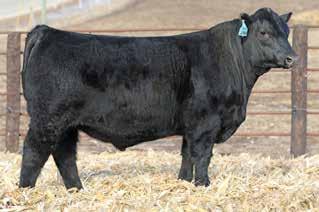

























H
H
H


this fat cattle deal to continue an upward trend going into the new year and into spring. How high we can go, that is the million-dollar question!

This year has sure started out much better than the previous cou ple of years. A lot, I mean A LOT of positive things are going on in the cattle industry and markets. I think we better appreciate them while we have them and cash in on them while we can.
s I wrote this article, we have received our first snowstorm of the winter and my four little ones could not wait to throw on their snow pants and go play in the white stuff! Me on the other hand, not so excited about leaving the warmth and comfort of my office. It is because they are looking forward to joy and fun and I am dreading frozen waters and/or sick cattle. Either way, it is safe to say that winter is upon us!
Now to look at some of the market reports that we have been seeing in the barns. The fat cattle market has been on a hot streak for several weeks, until this past week, when we experienced a slight dip in the market. We have seen some highs in the mid to high forties, but these have been some extremes. Most cash cattle in the country have been trading at forty level or slightly higher the past couple of weeks. I expect there to be a few bumps in the road, but I expect
The feeder market continues to get stronger and stronger with al most every passing week and this will only continue as the numbers continue to be tight. I can only imagine that light calves in April and May are going to bring a king’s ransom to go on pasture, especial ly if we get some rain in areas that have been under drought the past few years. Most 600-pound calves are bringing well over $2 lbs. I have also been talking with several peo ple who breed heifers annually, and they are having trouble finding any thing that will pencil out as most breeding age/weight heifers are bringing in the $1,300 plus range to begin with.
The fat cattle market continues to creep up or at the very least stay steady every week. Still seeing some top end, Prime program cat tle bringing in the mid to high 60’s through some barns, while the cash market in the country is still in the
The higher fat cattle market is driving a higher price for the feeder cattle market as well, even with the higher feedstuff inputs. We have seen some front end big strings of 800 pounds bringing well into the sixties and some 600-pound cattle bringing into the seventies and eighties. Once again these are some extreme tops. We have been trying to fill up our own lots as fast as possible, as I am not sure the feeder cattle are going to get any cheaper. We have been able to find cattle at cheaper prices than that and so when we do projects they are in the black.
The cull cow and bull market has lagged the fat market, as from all reports there have been around six

Kirk Lynch, Lynch Livestock Inc., Waucoma, IA Kirk is the Beef Division manager for Lynch Livestock Inc. and oversees all aspects of their backgrounding and cattle feeding operations throughout Iowa and Kansas. He is also deeply involved in the newly reopened Humeston Livestock Exchange in Humeston, Iowa. In addition, Kirk and his wife Mary own and operate Heartland Simmentals in Northeast Iowa, which is a seed stock operation that consists of 500 registered Simmental and Angus cows. They have four children: Gabrielle (8), Brayden (7), Vivian (5), and Bianca (1).
Humeston, Iowa 641-877-6092


percent more last year, making supply of cows. down, which be into next year, cow and bull with the same market.
The breeding been up and cently, I heard commercial pairs $2,000 and then can buy all the I want for $1,200 are looking to now is the time reasonably priced with increased are going to be ply over the next Wishing everyone Christmas and







“The value of this information and being more closely engaged with the cattle feeding sector has always been important. It is becoming invaluable as more cattle are channeled into specification-based, value-added areas of the supply chain,” Befort says.
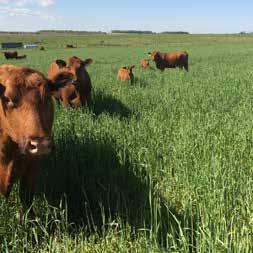
All participants can attend an annual educational field day at HRC Feed Yards, which delves into various aspects of the cattle markets, cattle feeding and beef packing. This year’s event is April 15.
KANSAS CITY, Mo. – More Hereford breeders and commercial users of Hereford genetics are discovering the feedlot and carcass performance of their genetics through various American Hereford Association (AHA) programs.
Currently, 94 participants from 22 states are feeding more than 1,400 head of Hereford and Hereford-influenced feeder cattle at HRC Feed Yards, Scott City, Kan. The numbers encompass the Hereford Feedout Program* and the National Junior Hereford Association (NJHA) Fed Steer Shootout**.

“Every year, we see increased interest in these programs from our members and their customers because of the value they find in benchmarking feedlot and carcass performance in their programs and then tracking subsequent performance relative to their benchmark,” says Trey Befort, AHA director of commercial programs.

These cattle feeding opportunities enable participants to enroll a few head or entire pens of cattle. They receive ongoing updates about how their cattle are performing while on feed and then receive a collective summary of all cattle enrolled in the program to see how their cattle performed relative to the entire group.
NJHA members enrolled in the Fed Steer Shootout can partake of additional educational activities, including Beef Quality Assurance certification, as well as competitive opportunities, throughout the program.
“These programs provide value to those who have never fed their cattle before and those who do so on a routine basis,” explains Bill Goehring, Libertyville, Iowa, AHA president - a Hereford breeder, commercial cow/calf producer and sale barn owner and manager. “These programs are a convenient, cost-effective way for Hereford seedstock producers and their commercial customers to identify how their genetics perform in the feedlot and in the packinghouse. The data also adds increasing accuracy to the breed’s genetic evaluation.”
*Hereford Feedout Program — participants enroll a minimum five head of same-sex (steer or heifer) cattle for feeding within a designated delivery period; participants can enroll whole-pen groups outside of the designated delivery period.
**NJHA Fed Steer Shootout — participants enroll individual steers or pens of three steers.



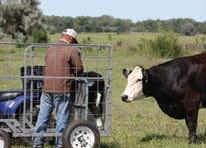
















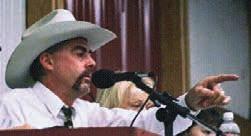






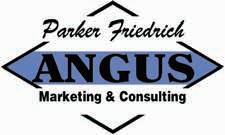














2K Cattle Enterprises
4M Angus
7N Ranch
A&B Cattle, LLC
April Valley Farms
Backroad Creative
Beckers Angus
Behlen Country
Bittersweet Acres
Blue Lake Plastics
Brad Z Ranch
Brinkley Angus Ranch
Cattle Visions
CJ Brown Studios
Collison Angus
Crawford, Scott
CSC Livestock
CSL Auctions Inc.
DBL, Inc.
De-Su Angus
Destiny Angus
Dix Angus
DLCC Ranch
Double A Stock Farm
Drysdale Angus
Evenson Angus
Fox’s Angus Farm
Frenzen Ang. & P. Herefords
Friedrich, Parker
Gilchrist, Kyle
Graham Angus
Gray’s Angus Ranch
Hall Stock Farm
Hamilton Farms
Hanneken Angus
Hawkeye Breeders
HeatSiecker
Humeston Livestock Exch.
I-29 Bull Run
Ingram Angus, LLC
Jacobson Red Angus
K-LER Cattle
K7 Herefords
Koester Red Angus
Leary Angus
Lee Simmental Farm
Leland Red Angus
Liberty Mutual Insurance
Linz Heritage Angus
Lowderman, Monte
Lowderman Auction Options
Matthews Coach’s Corral
Martin-Trudeau Insurance
Meyer Cattle
Millborn Seeds
MN Angus Breeders Sale
Muir Embroidery
Musgrave Angus
Nolin Red Angus
Paternal Power Bull Sale
Pladsen Red Angus
Rawhide Portable Corral
Real World Genetics Sale
Red Reckoning Sale
Reid Angus
Rogers Cattle Co.
Rogers Ranch
Safety Zone Calf Catchers
Sauk Valley Angus
Snowshoe Cattle Co.
Soaring Eagle of the Ozarks
Sonderup Charolais
Sonstegard Cattle Co.
Squeakin’ By LK Farms
Stockman Design Services
Stock Show University
Y-Tex Corporation
You
The Stockman hereby expressly limits its liability resulting from any and all misprints, errors and/or inaccuracies whatsoever in the advertisement and editorial content published by The Stockman and its said liability is here by limited to the refund of the customer for its payment for said advertisement, or the running of the corrected advertisement, or editorial notice. Notification by the customer of any error must be made within 30 days of the distribution of the magazine. Advertising copy received after the deadline may not be returned for proofing. Changes to advertising copy made after the deadline date will be allowed only if time permits, and will incur the appropriate charges according to time and materials involved in the changes. The opinions or views expressed in the editorials are those of the persons interviewed in the article and not The Stockman magazine. The Stockman does however reserve the right to edit or refuse all material which might be objectionable in content.
or used out of context, without prior specific approval of a proper credit to The Stockman
In our third year of participation, The Stockman is thrilled to announce the following Livestock Publications Council 2022 Awards Contest:



Category 18 - Technical Article
‘Self-Care for You and Others’ by B. Lynn Gordon

March 2021
FIRST PLACE
Category 26 - In-depth reporting (single) Seedstock Marketing - 2020 and Beyond, 1 and 2, by B. Lynn Gordon
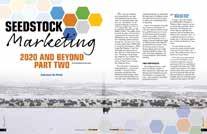
January and February 2021
FIRST PLACE
Category 28 - Miscellaneous Writing
‘Unsung Heroes of the Seedstock Industry,’ by B. Lynn Gordon

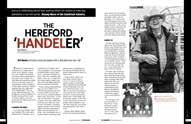
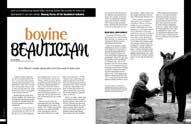
February, March, April 2021
FIRST PLACE
Category 34 - Two page ad design
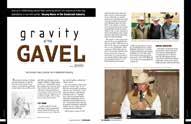
Ad for Wall Street Cattle Co., by Makayla Flower
October 2021


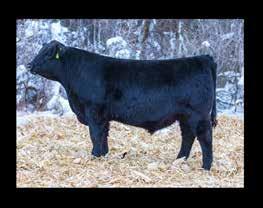






Tuesday, May 2, 2023 - 4:30 pm At the Ranch Arena - 12 miles southwest of Medina Ranch: (701) 486-3420 • Arlyn Cell: (701) 320-0371 • Doug Cell: (701) 269-9321

SELLING: 55 Simmental, Red Angus and Composite Bulls and 70 Open Commercial Heifers
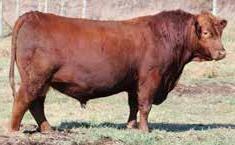


All successful buyers entered in Free Yearling Heifer Drawing immediately following the sale.
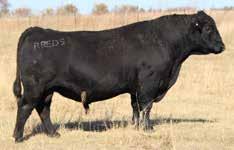
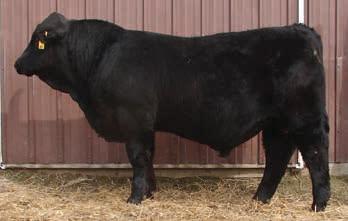
“Our SCR-sired Charolais calves have consistently produced 92-96% Choice and Prime, with 20-22% Prime.” -Joe from Colorado



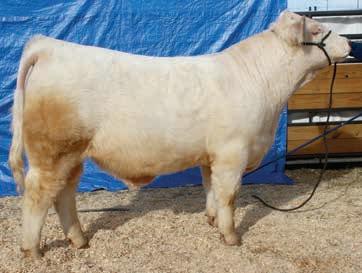



“Our SCR bull came back from his first summer breeding season in great shape.” -Larry from Texas “We are very happy with the SCR bulls we have purchased over the last 6 years in terms of performance and profitability.” -Bob from Nebraska


About the Stockman.
I graduated high school in 1979 and went to work for my future father-in-law. Sherry and I got married in 1980 and we have been running yearlings and cows ever since. Our cattle operation started with a smaller commercial herd. We have evolved our diversified farm operation over the years. We currently manage more than 300 purebred Angus cows as well as 120 commercial recip cows. We implant 200 to 250 embryos a year. Brinkley Angus operates on 2,000 owned acres and 1,200 rented acres of pasture and hay ground near Milan, Mo. We are a family operation. Our daughter, Crystal, and our son, Justin, as well as our four grandchildren Chloe, Brae, Ayden, and Walker are all an integral part of Brinkley Angus. We are primarily fall calvers. We do calve a few recips during this time of year, but not many. I really enjoy working with my commercial cattle customers. I like to try to make them successful. We try to help them market their calves and if they have bred heifers or cows to sell, we try to help them market those too. We work closely with Green City Livestock in Green City, Mo., to market our cattle and to assist our customers in marketing their cattle as well.”
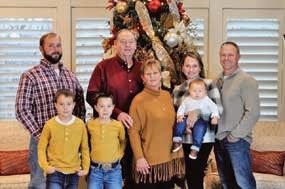
What about the beef cattle industry excites you the most?
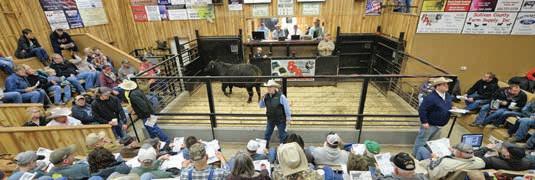


Our future is what excites me the most today. Good times are coming, and I mean real good times. I think the markets are going to get really good in the next few years.”


Which animal (any species) has left the greatest impact on you?
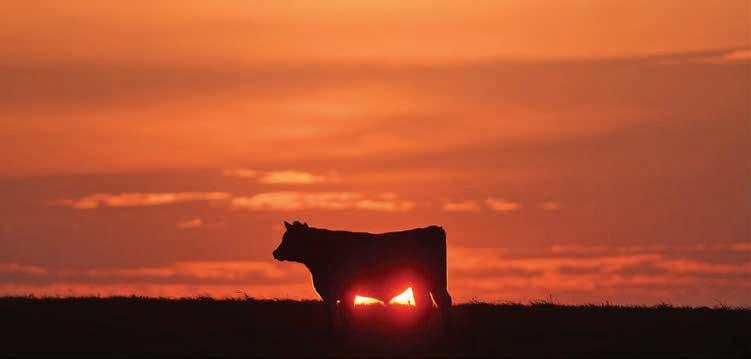
BAR Blackcap 3683-745, which is the granddam of the bull BAR Dynamic. I sold BAR Dynamic to ABS Global, Inc. BAR Blackcap 3683-745 had a big impact on me and our operation. We have a lot of good cows, but she has just always been one of my favorites.”
Your go-to sorting apparatus?
I use a paddle or a flag. But typically, a paddle.”
Describe your best day.
I have a lot of best days honestly; AIing, calving, sale day, getting to go have lunch with a customer – all of those types of things constitute a good day to me. I love what I do so that makes most every day a good day.”
The most important lesson you’ve learned in this business?
Listen to your customers.”
Your favorite non-farm activity to do in your free time?
I enjoy going out to dinner with my wife. I also enjoy going to the lake with my family.”
What is your least favorite job on the farm?
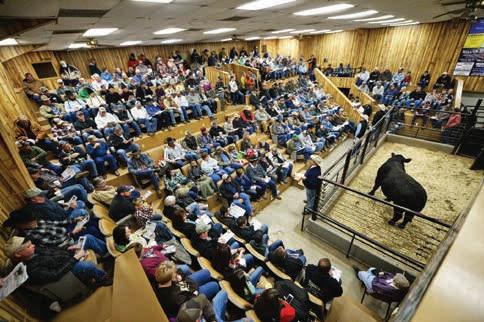
I am not crazy about plowing snow or fighting mud.”

